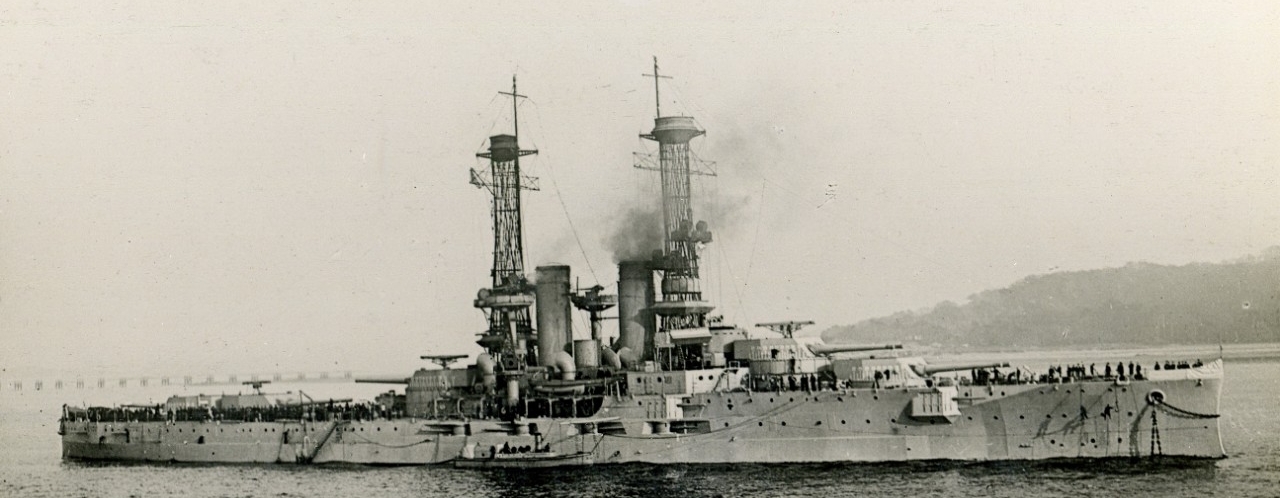USS Florida, lead ship of a class of two 21,825-ton battleships, was built at the New York Navy Yard. She was commissioned in September 1911 and operated in the western Atlantic and Caribbean areas for the next six years. In addition to regular fleet maneuvers, gunnery practice and training exercises, Florida took part in the U.S. intervention at Vera Cruz, Mexico in April-July 1914. In December 1917, she steamed across the Atlantic to join the British Grand Fleet at Scapa Flow and served in the North Sea for the rest of World War I. In December 1918, she escorted President Woodrow Wilson as he arrived off France, en route to participate in the post-war peace conference. Later in that month, Florida was present in New York Harbor for the Victory Fleet Review.
During the last year of the 'Teens and through the 'Twenties, Florida generally operated from the U.S. east coast down to Central America. She was given the hull number BB-30 in July 1920. Early in the decade, the battleship carried the Secretary of State on a diplomatic cruise to South America and the Caribbean. Later in the decade, she was flagship of the Control Force, U.S. Fleet. Training missions, including Naval Academy Midshipman's cruises, were also among her duties.
Florida was modernized in 1925-27, receiving heavier deck armor and anti-torpedo blisters along her sides, as well as oil-burning boilers and a rearranged secondary gun battery. Her two smokestacks were trunked into one and her "basket" mainmast was removed. The ship served but a few years in this new guise, as she had to be removed from the National armament under the terms of the 1930 London naval limitations treaty. Accordingly, USS Florida was decommissioned in February 1931 and scrapped at the Philadelphia Navy Yard later in that year.



